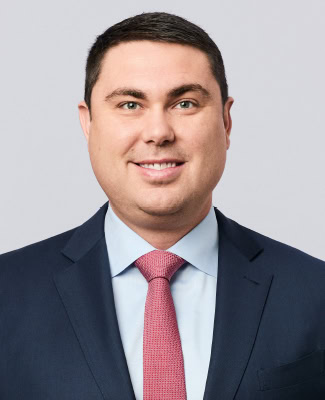Interview with RXO CEO: Building Solutions and Relationships

Through innovation, valuable internal and external relationships, quality service, and technology, Drew Wilkerson helps keep customer supply chains moving, even during tough times.

Drew Wilkerson, CEO, RXO
Drew Wilkerson graduated from college with no specific job in mind. But he knew how he hoped to spend his career. “I wanted to work with people and have the ability to create solutions and build strong relationships,” he says.
At the suggestion of a friend who worked there, Wilkerson visited third-party logistics company C.H. Robinson. “I spent a day with the teams, and I was hooked,” he says.
From a series of positions at Robinson, Wilkerson moved on to XPO Logistics, eventually rising to the role of president, North American transportation. In 2022, XPO spun off its technology-enabled brokerage business to form RXO, based in Charlotte, North Carolina. It chose Wilkerson to lead the new company.
We talked with Wilkerson about his rise to the CEO’s office and his current focus at RXO.
IL: Since the formation of RXO, what have been your top initiatives?
We want to take market share. To do that, we have to focus on giving customers great service from Point A to Point B , with good communication throughout the life cycle of an order. We have to create solutions for them, using our technology and data to run their transportation networks more efficiently. There has to be innovation.
And we need to have really good relationships with our customers. Our top customers have been with us for 16 years on average. They don’t just come back and renew the business we’ve done with them the previous years. In most cases, they reward us with more freight, because of the service and solution innovations we’ve brought them.
IL: What’s an unusual challenge you took on for a customer?
In 2021, the ports—especially on the West Coast—were so backed up, they sometimes had more than 100 ships waiting to get in. Obviously, that delayed our customers’ inbound shipments. So as soon as their product hit the port, we sent drayage trucks to pick up the freight and take it to our facility, where we transloaded it.
From there, we gave our customers options, based on what worked best for their networks—LTL shipments, truckload, intermodal. Were they looking to get products to consumers as fast as possible? Were they looking for the best price? By providing options, we helped our customers keep their supply chains moving during one of the toughest times I’ve seen in my career.
IL: What new and interesting projects are you working on?
We were early adopters of technology in transportation. Today, one important set of questions for us is how do we integrate our technology with everyone it touches? How do we give our customers a more efficient experience? How do we make our technology easy for the carriers we partner with, so they can negotiate prices, book loads, and manage their entire businesses from their phones?
We also want our technology to help our employees accomplish more every day. On a rolling 12-month basis, our employee productivity—the number of loads per head per day—is up by 18% year over year. That’s largely because our technology has reduced the number of keystrokes and clicks employees have to make, so they can focus on building relationships with customers and providing solutions.
IL: Which emerging technologies have exciting implications for RXO and its customers?
We’ve been using artificial intelligence and machine learning for a decade. It helps us move faster from a pricing perspective, and it has allowed us to attain some of the strongest margins in the industry with regard to how we procure transportation. For the future, generative AI offers opportunity for back-office functions and even for customer-facing activities.
IL: How would you describe your leadership style?
I’m very transparent and open. You do not need an appointment or scheduled meeting to stop into my office to talk about yourself, your career, or ways to improve the company.
I’m also customer-focused. I spend a lot of time with our customers and care about them deeply. My job is to make them look good within their organizations.
Finally, as a leader, I focus on surrounding myself with and retaining talented individuals. Many people on our leadership team had already been with us for 10 years or longer before the spinoff.
IL: How do you give criticism or correction when that’s required?
If you have good relationships with people, the best approach is to be direct. When people know that you’re invested in their future and the critique comes out of a good place, they’re generally receptive. Often, I talk about the “why” behind the criticism, what the impact can be for them if they consider doing something in a different way.
IL: What’s the hardest aspect of your job?
For a leader, the most difficult thing is making sure you choose the right people to surround yourself with. Coming into the spinoff of RXO, the most challenging part of my job was filling some positions with people who did not come over from XPO. Fortunately, the people we chose fit in well and have made us a better organization.
IL: Among today’s active leaders, whose brain would you like to pick?
I’d love to talk to Elon Musk, who is innovative and not scared to take on big challenges. I’d pick his brain on how he builds organizations and where he thinks technology can disrupt, or allow business to grow at a faster rate in the future.
IL: Outside of work, how do you like to spend your time?
I love spending time with my family. My wife and I grew up in the same small town in South Carolina and have been together since I was 16. We have two beautiful girls, ages 14 and 11. If I can spend time with them watching South Carolina football, basketball, or baseball, that’s even better.
From Imperfection Comes Strength
Early in Drew Wilkerson’s tenure at C.H. Robinson, a customer turned up with a complaint. “We had created some service issues,” Wilkerson says. Such difficulties may damage the partnership between a shipper and a 3PL. But that’s not what happened.
“One of my mentors at the time used those challenges as an opportunity to create a stronger relationship with the customer,” Wilkerson says. “He didn’t back away from the tough problem. He leaned into it.”
The customer was so impressed by how the service provider worked to arrive at a solution, the shipper ended up giving C.H. Robinson more business. “And there was more trust in the relationship,” he says.
That incident delivered an important lesson: “When things don’t go perfectly, that’s an opportunity to improve the business and create stronger relationships.”
